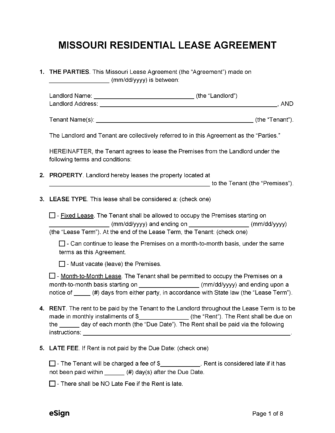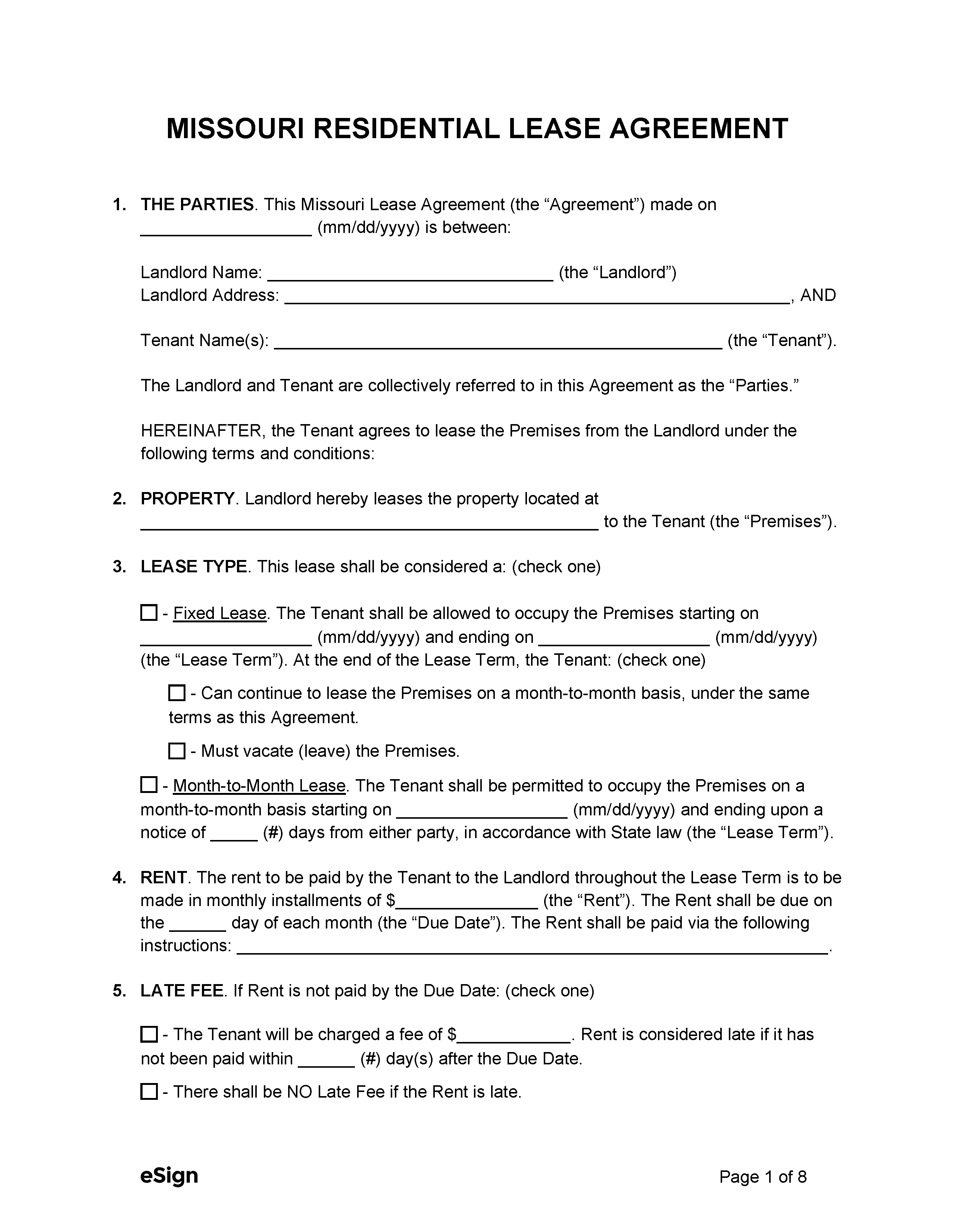Lease Agreements: By Type (6)
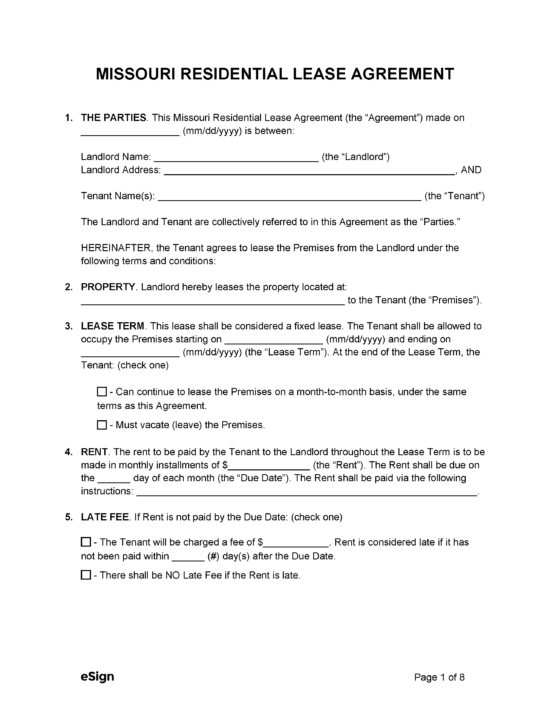 Standard (1-Year) Lease Agreement – This lease permits tenants to live on the landlord’s property for a fixed period in exchange for monthly payments. Standard (1-Year) Lease Agreement – This lease permits tenants to live on the landlord’s property for a fixed period in exchange for monthly payments.
Download: PDF, Word (.docx), OpenDocument |
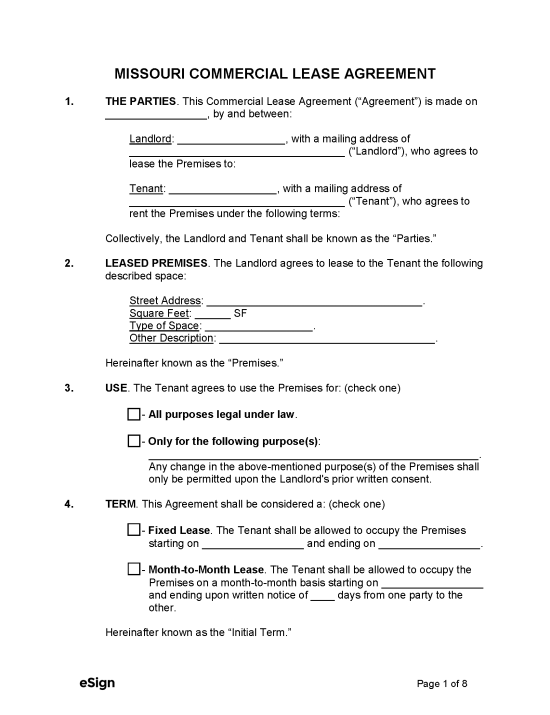 Commercial Lease Agreement – Landlords can use this agreement to lease commercial real estate, such as farmland, office space, or warehouses. Commercial Lease Agreement – Landlords can use this agreement to lease commercial real estate, such as farmland, office space, or warehouses.
Download: PDF, Word (.docx), OpenDocument |
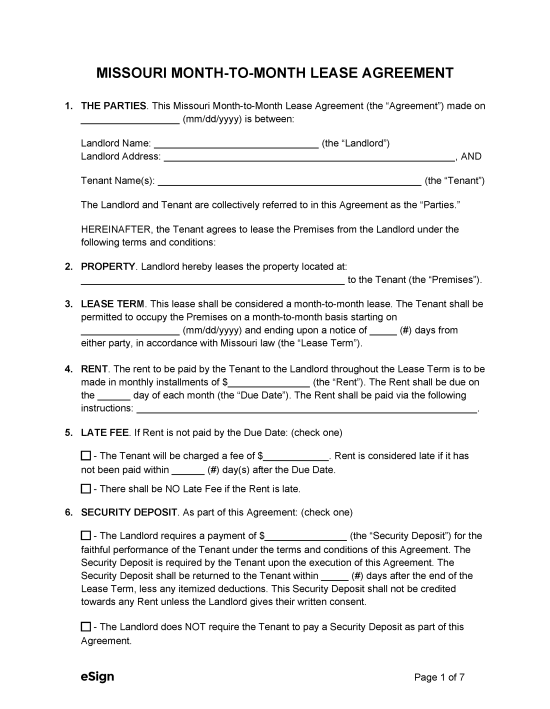 Month-to-Month Lease Agreement – This lease automatically renews every month and only ends when the landlord or tenant provides notice of their intent to terminate. Month-to-Month Lease Agreement – This lease automatically renews every month and only ends when the landlord or tenant provides notice of their intent to terminate.
Download: PDF, Word (.docx), OpenDocument |
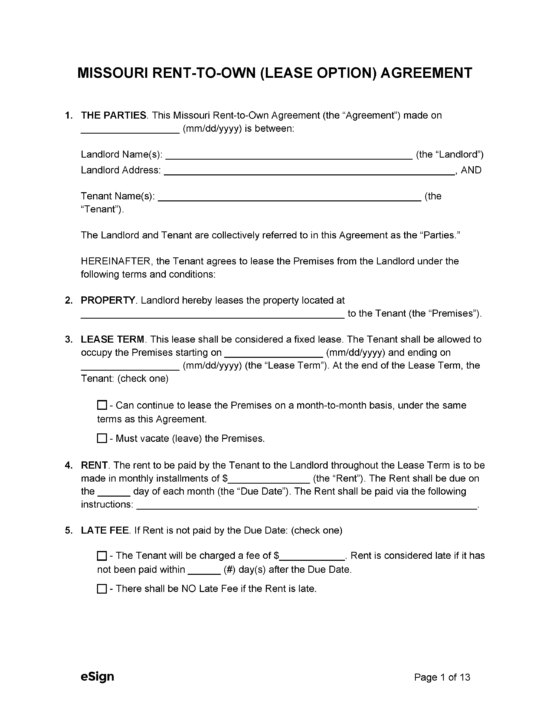 Rent-to-Own Agreement (Lease Option) – A rent-to-own agreement allows the tenant to lease the landlord’s property with the option to purchase it so long as they comply with the terms of sale. Rent-to-Own Agreement (Lease Option) – A rent-to-own agreement allows the tenant to lease the landlord’s property with the option to purchase it so long as they comply with the terms of sale.
Download: PDF, Word (.docx), OpenDocument |
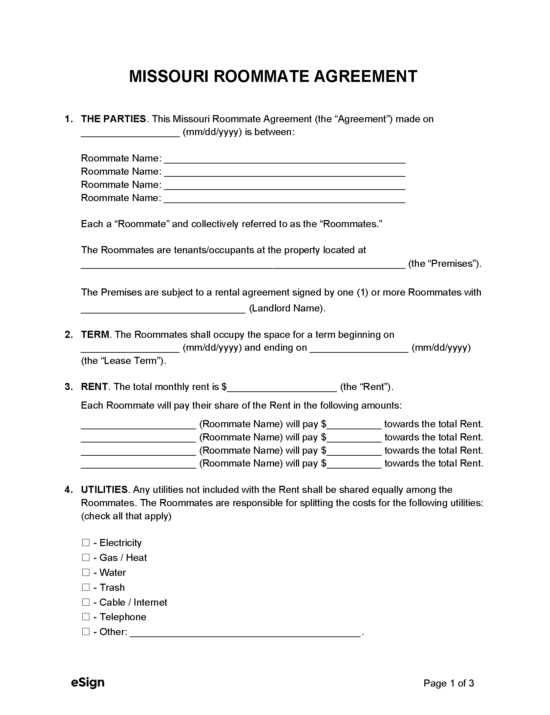 Roommate Agreement – Used to outline the terms and conditions of a shared living arrangement, including guest rules, cleaning responsibilities, and each occupant’s rent and utility obligations. Roommate Agreement – Used to outline the terms and conditions of a shared living arrangement, including guest rules, cleaning responsibilities, and each occupant’s rent and utility obligations.
Download: PDF, Word (.docx), OpenDocument |
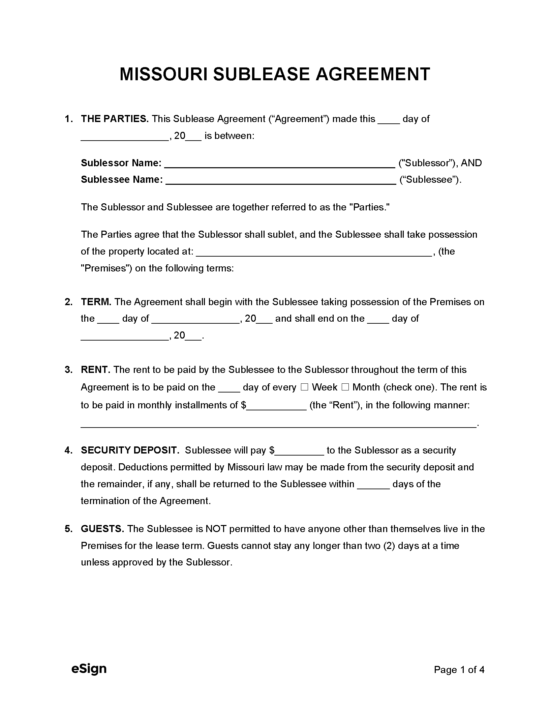 Sublease Agreement – This agreement enables a tenant to rent out their living space to another individual for part or the remainder of the lease term. Sublease Agreement – This agreement enables a tenant to rent out their living space to another individual for part or the remainder of the lease term.
Download: PDF, Word (.docx), OpenDocument |
Required Disclosures (3)
- Lead-Based Paint Disclosure (PDF) – If leasing residential property built before 1978, landlords must advise tenants in writing that lead-based paint may be present in the building.[1]
- Methamphetamine Production – When a landlord knows that a rental property was used to manufacture methamphetamine, they must disclose this info in writing to prospective tenants.[2]
- Names and Addresses – Before starting a residential tenancy, landlords must provide tenants with the name and address of the property manager and the owner or the owner’s agent.[3]
Security Deposits
Maximum Amount ($) – Landlords cannot request or accept a security deposit greater than two months’ rent.[4]
Collecting Interest – The landlord can keep any interest earned from the security deposit.[5]
Returning to Tenant – The landlord has 30 days to return the security deposit to the tenant after their lease terminates.[6]
Itemized List Required? – Yes, an itemized list of deposit deductions must be provided to the tenant within 30 days after the tenancy terminates.[7]
Separate Bank Account? – No, a separate account is not required; however, security deposits must be held in a financial institution insured by a federal agency.[8]
Landlord’s Entry
General Access – State law does not define requirements for entering a rental unit. However, unless the lease specifies otherwise, it is recommended that landlords provide at least 24 hours’ notice of their intention to enter.
Immediate Access – There are no laws regarding immediate access in Missouri. Generally, landlords can enter without notice if there’s an emergency on the premises.
Rent Payments
Grace Period – Missouri’s landlord-tenant laws do not provide a grace period for rent, allowing the landlord to impose late fees immediately after the rent is overdue.
Maximum Late Fee ($) – Missouri has no laws limiting how much landlords can charge for late rent.
Bad Check (NSF) Fee – Landlords can apply a $25 fee if the tenant issues a check with insufficient funds.[9]
Withholding Rent – If there’s an issue affecting the property’s habitability, sanitation, or security, and the landlord doesn’t fix the problem within 14 days of receiving notice (or sooner if necessary), the tenant can arrange for the repairs and deduct the expenses from their rent.[10]
- Maximum Deduction – The maximum deduction for repairs is $300 or one-half of the rent payment, whichever is greater. In either case, the deduction cannot exceed one month’s rent.
Breaking a Lease
Non-Payment of Rent – A verbal or written notice may be issued as soon as rent is overdue. The landlord can break the lease if the tenant doesn’t pay immediately after receiving notice.[11]
Non-Compliance – Tenants in violation of the rental terms are entitled to a 10-day notice before the landlord can break the lease.[12]
Lockouts – Except in cases of property abandonment, a court order is required to prevent a tenant from entering the rental unit.[13]
Leaving Before the End Date – If the tenant breaks the lease by moving out early, they’ll still be responsible for rent payments.
- Duty to Mitigate Damages – Landlords must take reasonable steps to re-rent the property if they plan to use the tenant’s security deposit as compensation for unpaid rent.[14]
Lease Termination
Month-to-Month Tenancy – Termination of month-to-month tenancy can be accomplished with a 1-month notice notice to quit.[15]
Unclaimed Property – If rent goes unpaid for 30 days and the landlord suspects that the unit has been abandoned, they must provide written notice to the tenant. The tenant’s property may be disposed of if they fail to pay or respond to the notice within 10 days.[16]
